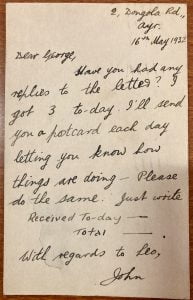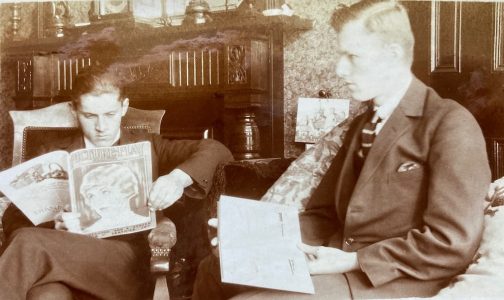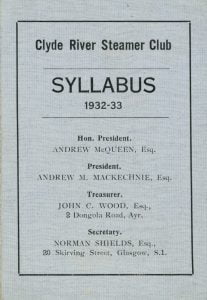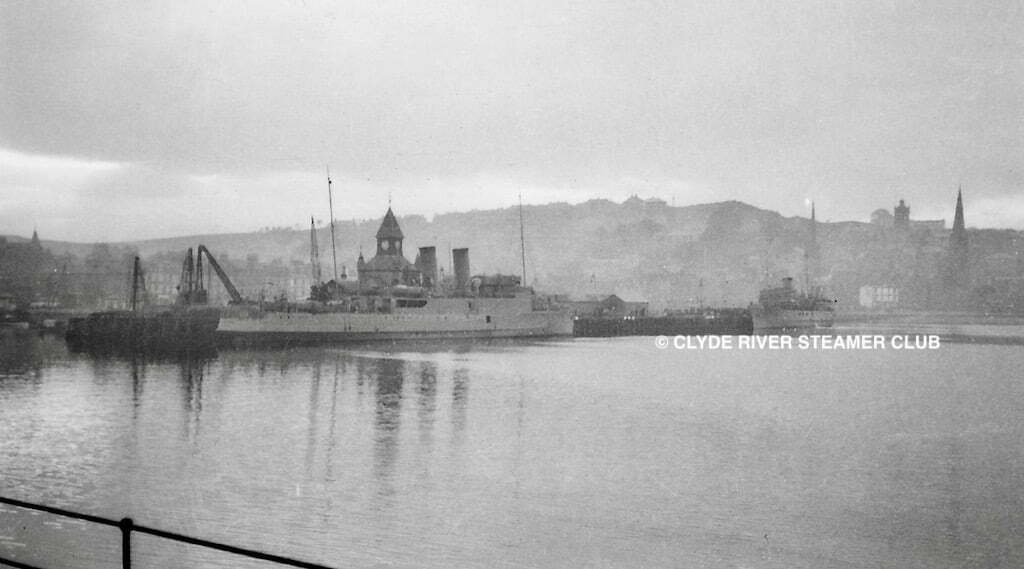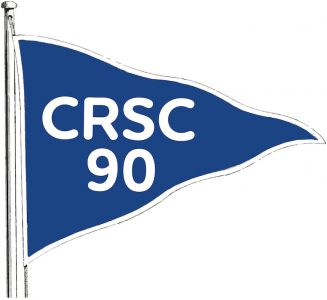 When a group of enthusiasts formed the Clyde River Steamer Club in 1932, clubs were commonplace. Nine decades later, it is rare to find them. Society has changed: 21st century people socialise on the internet, around a sporting activity, in pubs, professional associations or more informal groupings. Leisure interests have proliferated. Foreign travel is easy. The very word ‘club’ is regarded in some circles as old-fashioned — as is ‘steamer’.
When a group of enthusiasts formed the Clyde River Steamer Club in 1932, clubs were commonplace. Nine decades later, it is rare to find them. Society has changed: 21st century people socialise on the internet, around a sporting activity, in pubs, professional associations or more informal groupings. Leisure interests have proliferated. Foreign travel is easy. The very word ‘club’ is regarded in some circles as old-fashioned — as is ‘steamer’.
And yet CRSC is very much alive — still in touch with the latest shipping trends and eager to celebrate its 90th birthday. The ships that fascinate us have changed, as have many of the routes they serve, and our interest today is focused on the western isles as much as it is on the Clyde, reflecting the greater variety of ferry sailings in the Hebrides.
The pleasures of ‘meeting together, sailing together and talking together’ are as valid in the 21st century as they were in 1932, when those aims were first articulated by our founders and printed on CRSC’s inaugural syllabus card.
People with a fascination for steamers, ferries, ships — call them what you will — are bound by a special enthusiasm that they enjoy sharing, and we on the west of Scotland are blessed with sea and loch journeys that are among the most scenic and varied in the world, all within easy reach of major population centres.
For as long as waterborne services on the west of Scotland continue to develop, CRSC will be in business. Those services add to the rich history of ships, sailings and seafarers that form such a vital part of our Club’s heritage, and which we promote in our magazines, Reviews, Calendars and meetings. Happy Birthday, CRSC.
You can follow CRSC’s decade-by-decade history by clicking here.
● ● ● ● ● ● ● ● ● ●
The Club’s origins can be traced to a letter by a 15-year old Ayr schoolboy, John Wood, which was published in the Sunday Mail on 28 February 1932.
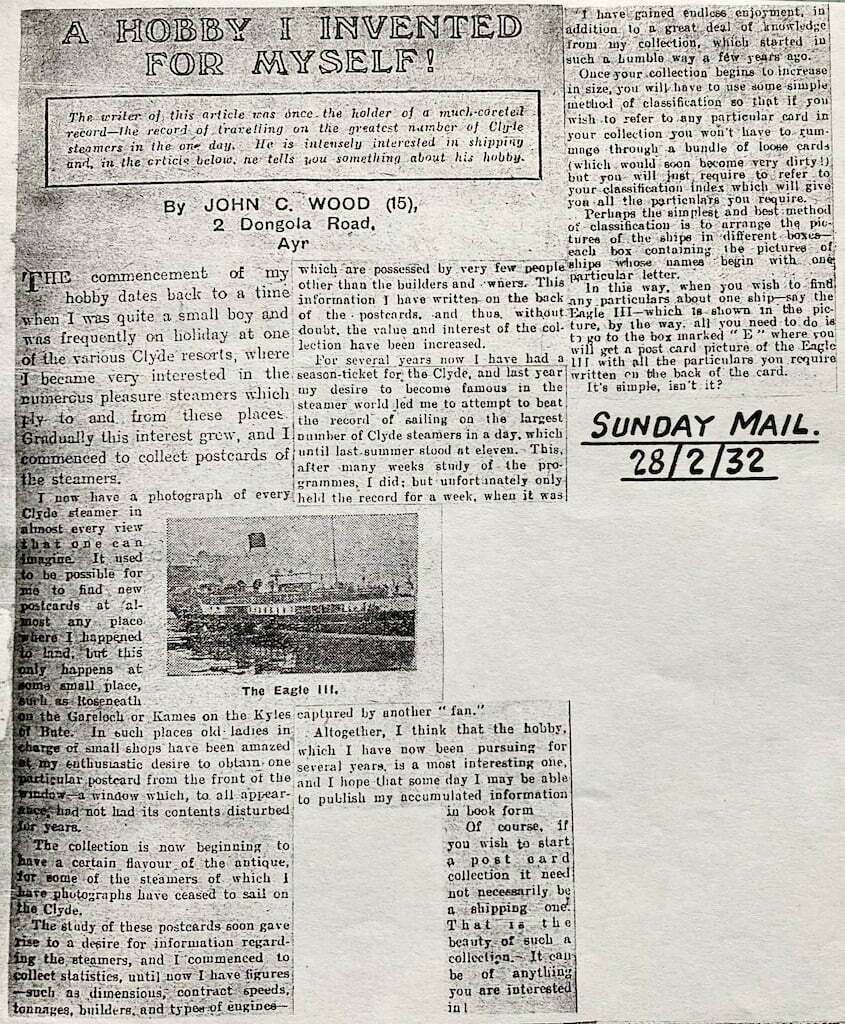
John Wood’s letter to the Sunday Mail voiced sentiments common to many young ship enthusiasts of the early 1930s. They struck a chord with George Stromier, a 27-year old newspaper clerk living on Glasgow’s south side, who immediately wrote to him expressing a shared interest in steamers and steamer photographs. In this, George was aided and abetted by his cousin Leo Vogt. Thanks to the care taken by George and Leo to preserve artefacts relating to their shared enthusiasms, the letters from John Wood have survived. On 4 March John replied:

Correspondence between George and John began to flow, and soon they were comparing notes on the relative merits of the old Juno, the new Duchess of Hamilton, how their photograph collections compared and how many steamers it was possible to ‘bag’ in a single day on the Firth. In a letter dated 14 March 1932, John wrote:
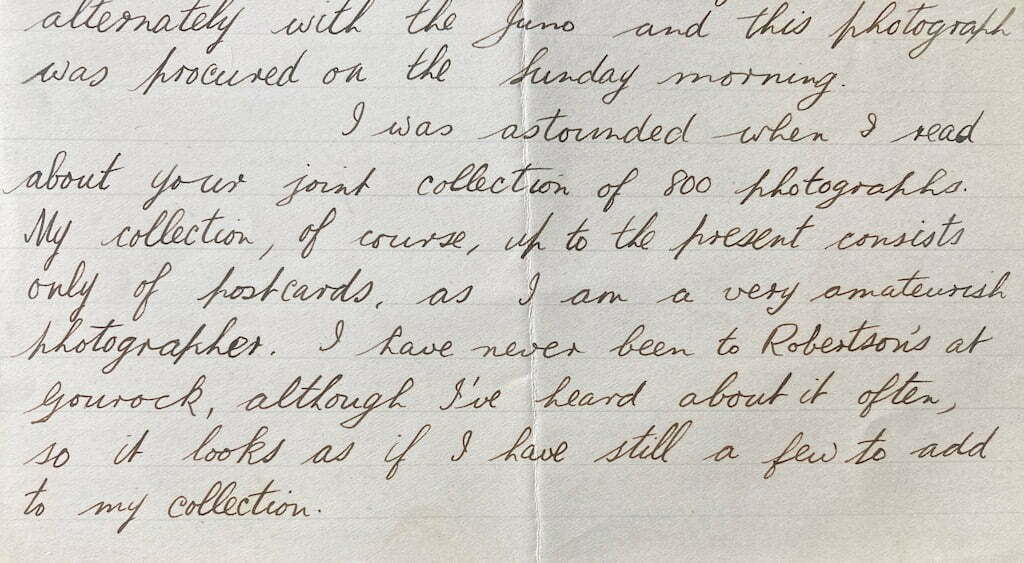
In reply to further correspondence from George, John first aired the idea of forming a club on 29 March, in a letter that explains why John has always been credited with being CRSC’s founder:
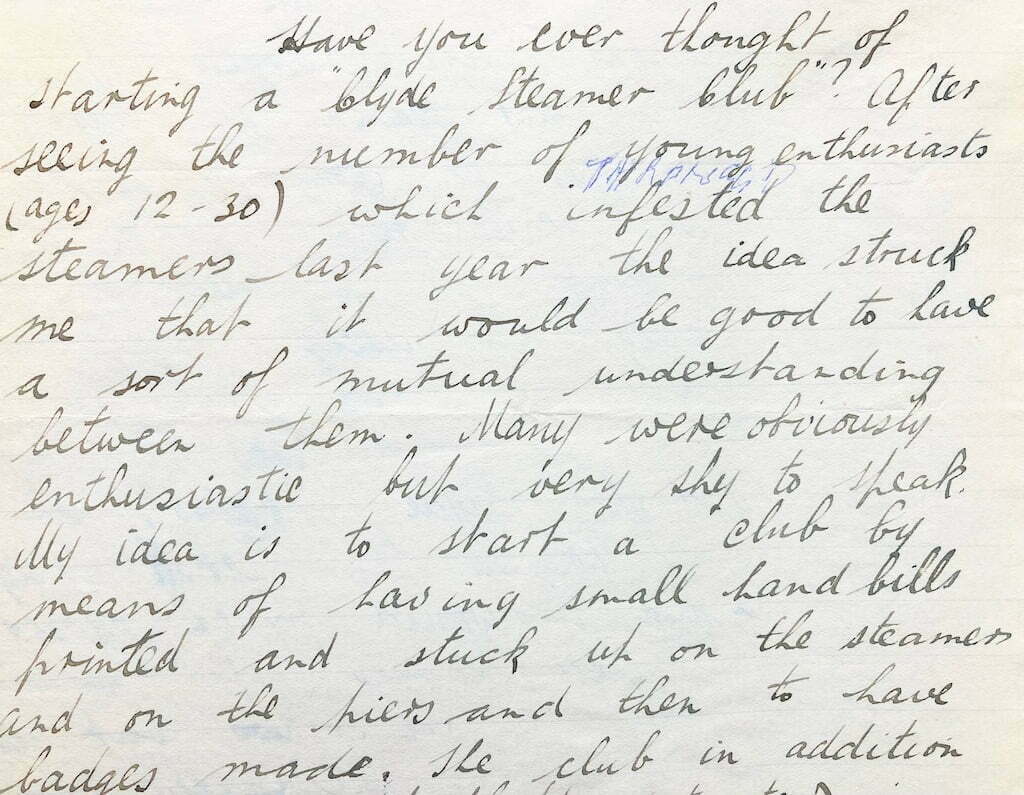

It soon became obvious to the two young enthusiasts that they should meet — which they did on 23 April 1932 (in the company of their mothers) at the Stromier home, 10 Nithsdale Drive in Shawlands. This was followed by a visit by George and Leo on Saturday 14 May to the Wood household at 2 Dongola Road, Ayr, during which they concocted a letter to the press, inviting expressions of interest from fellow enthusiasts in forming a club. The letter was first published in the Glasgow Herald of Monday 16 May (and subsequently in numerous other dailies and weeklies):
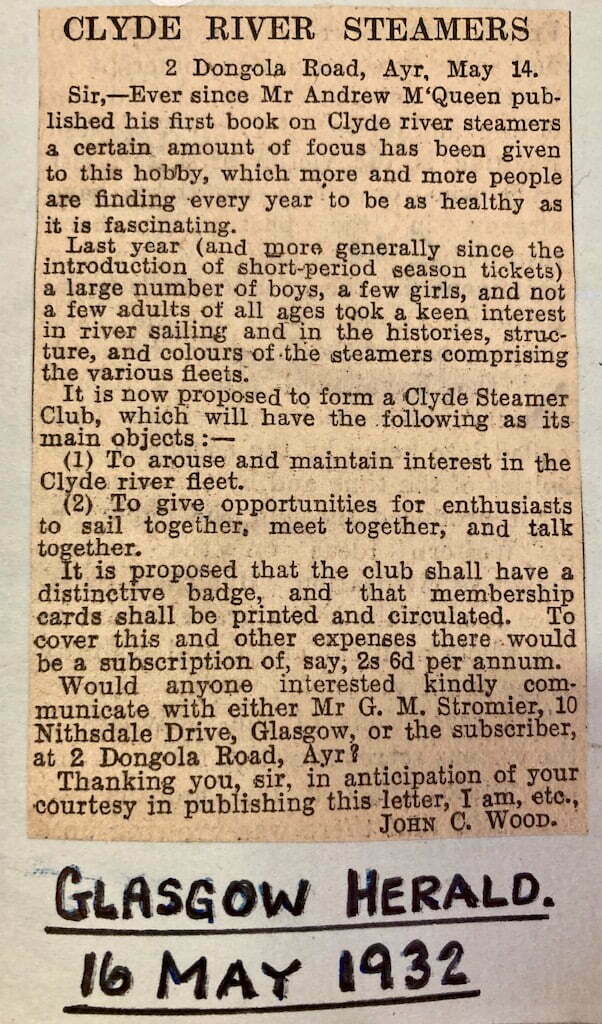
Replies began to pour in to the two addresses given in the published letter, with John and George keeping each other regularly informed of the numbers:
● ● ● ● ● ● ● ● ● ● ● ● ● ●
On 25 May the Glasgow Evening News published an article by ‘Vagabond’ (pen name of the writer George Blake), headlined ‘Are you going to join the new club?’, fuelling further public interest in the project, and the following Sunday (29 May) a preliminary meeting was held at 10 Nithsdale Drive, under the chairmanship of John’s father James, to hammer out the next step. Those present were John Wood, George Stromier, Leo Vogt and Norman Shields, one of the first respondents, who took the minutes and became the Club’s first Honorary Secretary; as well as David Fenton, Edwin Wylie, David Bullions, Harold King and A. T. Nelson. They agreed on a name for their association, the word ‘river’ being inserted to indicate that their interest lay predominantly in Clyde-based coastal steamers, and decided to invite the distinguished steamer historian Andrew McQueen to address the inaugural public meeting, the date of which was set for Wednesday 15 June:

At that meeting Andrew McQueen gave a short address and Andrew Mackechnie was elected the Club’s first President. McQueen was invited to take the post of Honorary President. Sadly he died the following year. At the age of 16 John Wood became Treasurer, a post he held until 1934, when medical studies obliged him to move further afield. His career later took him to Inverness and Worcester, and he was not reunited with George Stromier and Leo Vogt until the late 1960s. John died at Malvern on 16 November 1973.
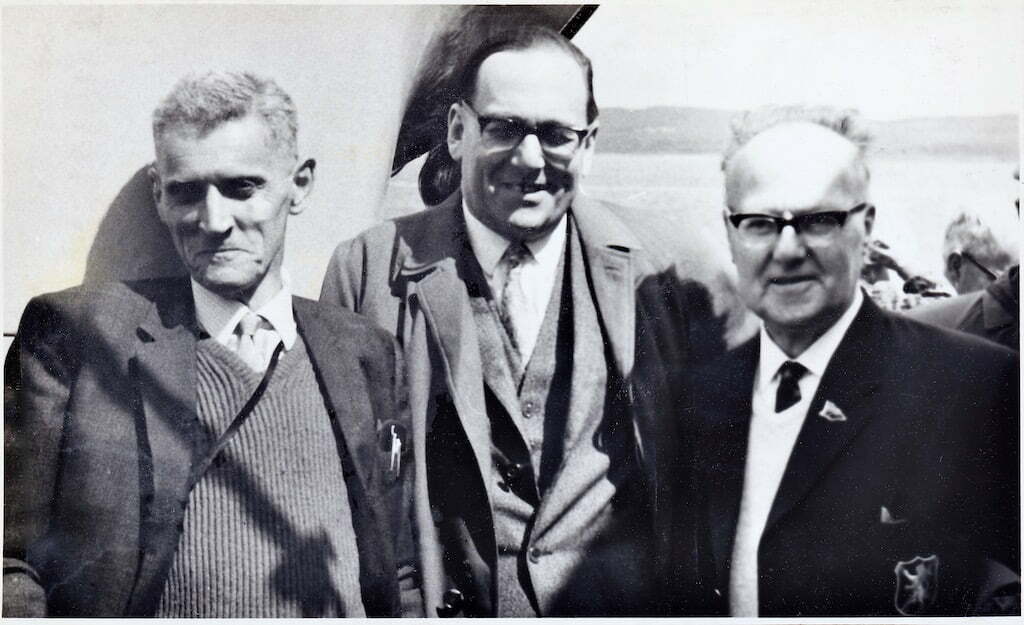
CRSC founder John Wood (centre) with Leo Vogt (left) and George Stromier (right) on board Duchess of Hamilton on 31 May 1969. John Wood died four years later. George and Leo served as President of the Club in successive years in the early 1940s, and each became Honorary President in their final years, dying in 1988 and 1989 respectively
The first committee meeting of the new club was held on 21 June 1932 at the Christian Institute, Bothwell Street, Glasgow, and the first business meeting on 29 June (at the Central Halls), at which a constitution was agreed and an enamel badge with gilt letters approved, as a way of helping members to advertise the club, and recognise fellow members on board the steamers:

The subscription for the first year was set at 2/6d and an additional 1/6d covered the cost of the badge, making a total in 2022 terms of 20p. The Club’s first outing was arranged for Saturday 6 August — by the former Glasgow and South Western Railway paddle steamer Jupiter from Gourock at 2.40pm to Ormidale (a special coach having been reserved on the train departing Glasgow Central at 1.58).
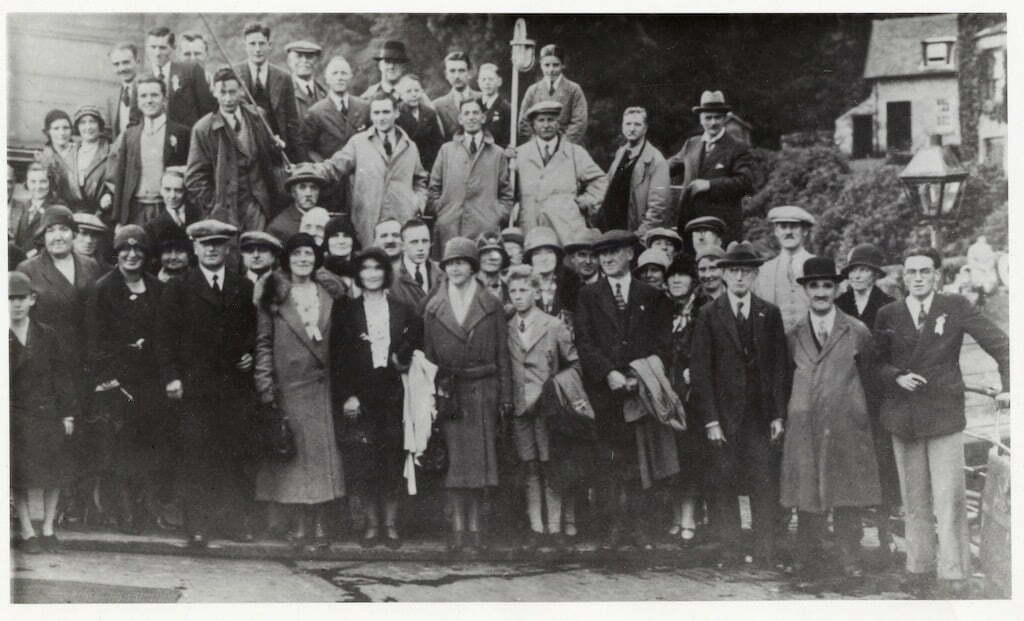
There was a healthy turnout for the cruise to Ormidale: the CRSC party gathered for a group photograph on the pier
The first meeting of the 1932-33 winter session took place on 19 October: Andrew Mackechnie gave a talk titled ‘A Day on the Firth’.
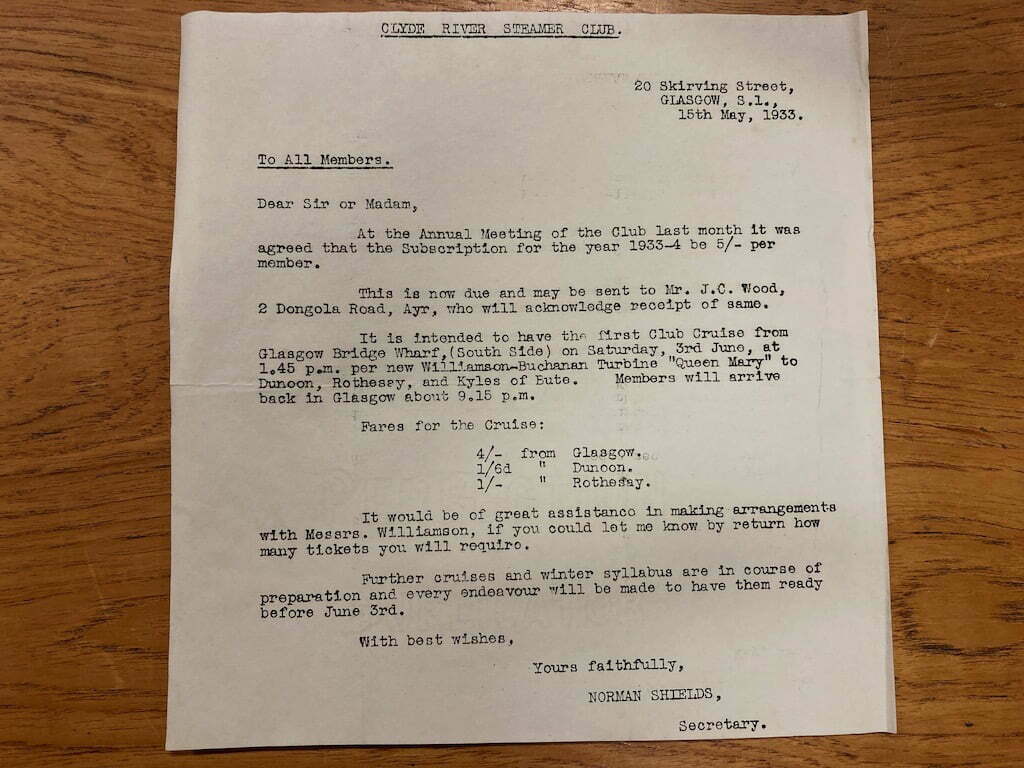
The first Club outing of 1933 was announced for Saturday 3 June — ‘doon the watter’ on board the new Williamson-Buchanan turbine Queen Mary. In the same letter, notification was given of a rise in the annual subscription
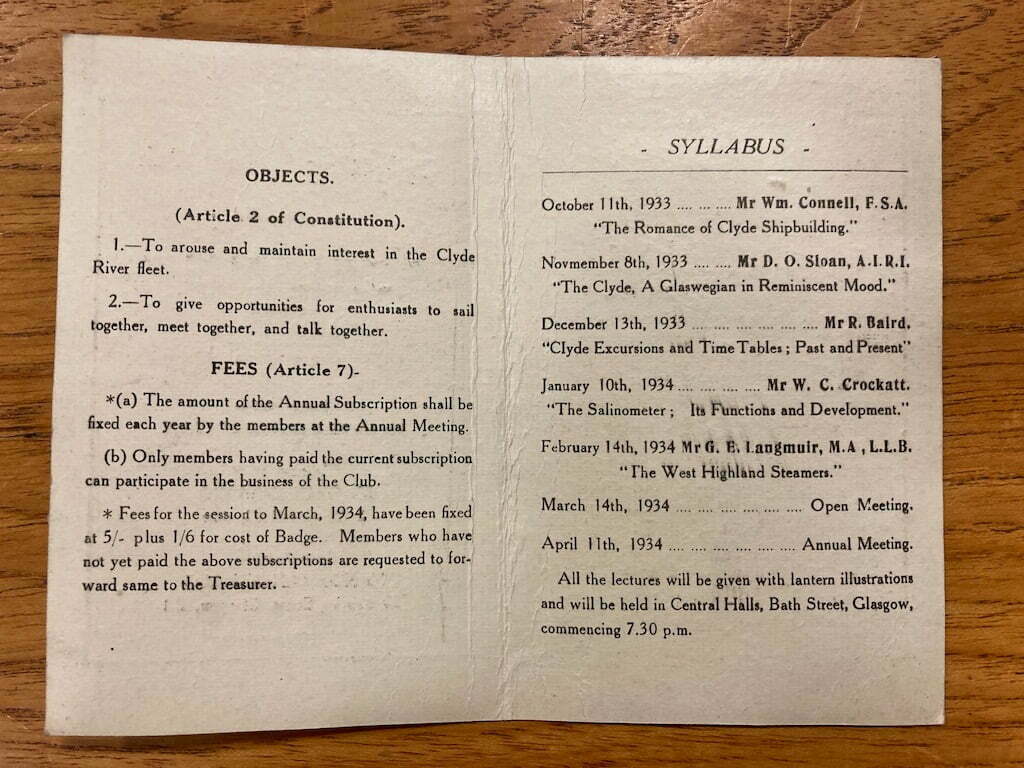
The 1933-34 winter session included a talk on 14 February on the subject of ‘West Highland Steamers’ by a young Glasgow lawyer, Graham Langmuir, who later that year published a seminal book of the same title and became CRSC’s third president
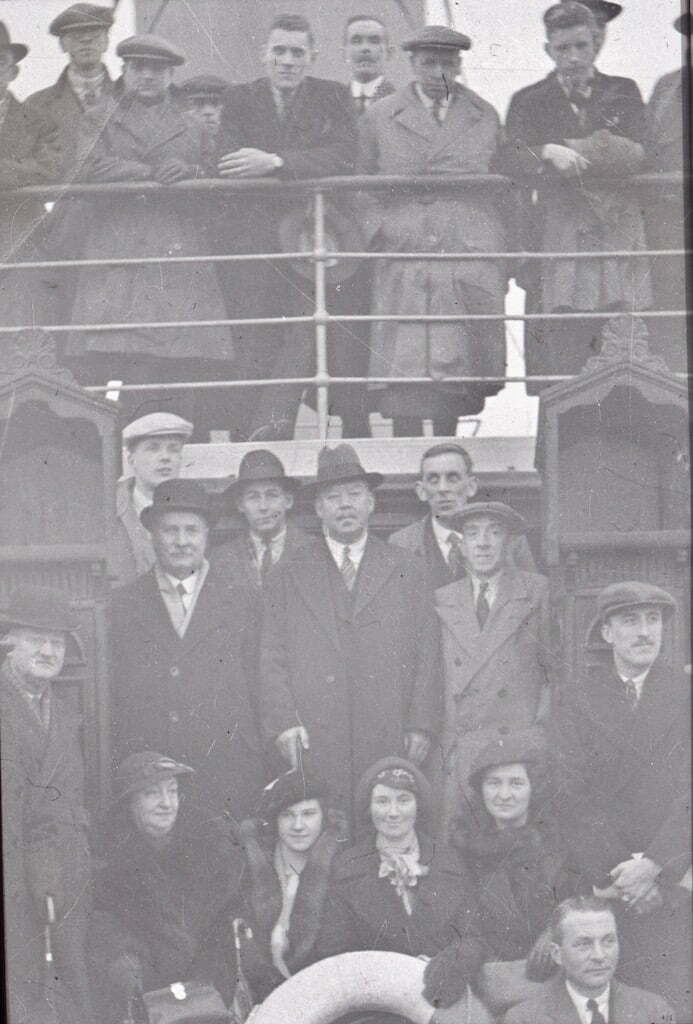
Graham Langmuir, in a peak cap, can be seen standing on the lower level lefthandside. The occasion was the Club’s farewell visit to the venerable MacBrayne paddle steamer Columba at Greenock on 28 December 1935, a few weeks before she was towed to the breakers at Dalmuir. Leo Vogt is standing above the rail, centre, in dark jacket
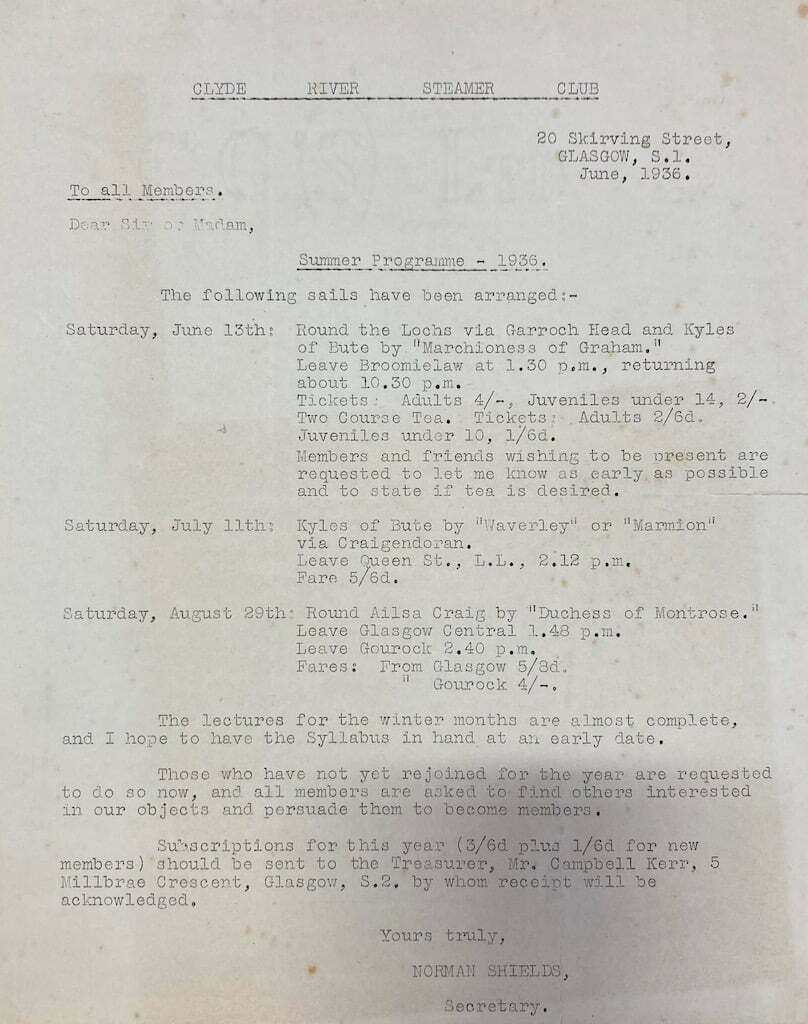
The 1936 CRSC cruise programme included a Round the Lochs excursion from Glasgow on the new LMS turbine Marchioness of Graham

Robertson of Gourock’s portrait of the new Fairfield-built turbine steamer Marchioness of Graham on trials in 1936

The 1938-39 syllabus included the Club’s first Review — by George Stromier, who continued this annual survey of shipping activity on the Firth until he was called up for war service in 1942. The Review became a Club staple, taking printed form from 1953
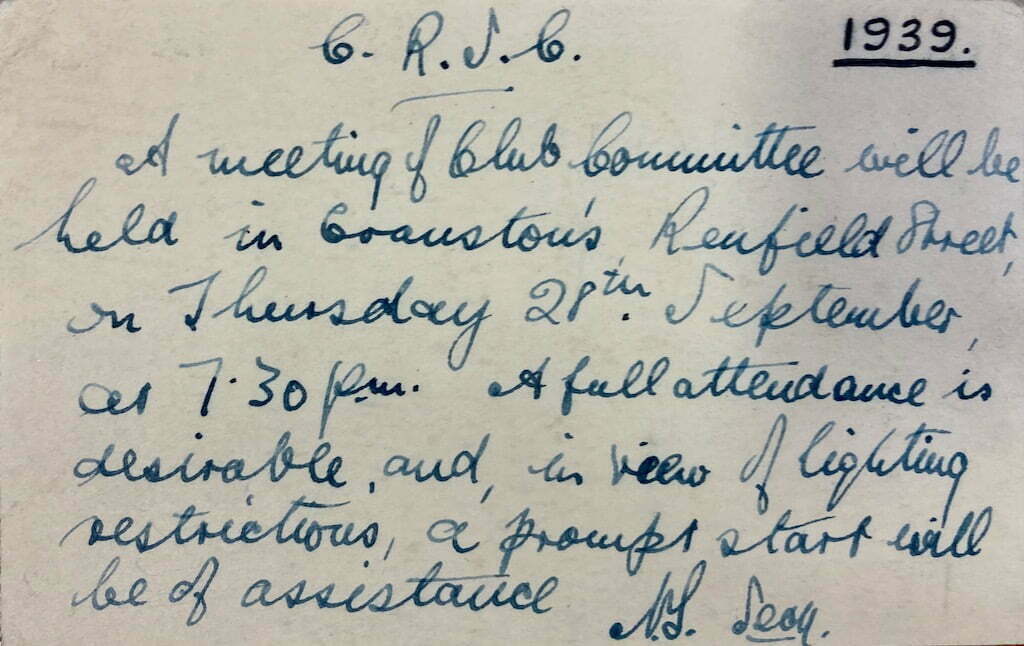
The September 1939 committee meeting took place three weeks after war had been declared. There were already lighting restrictions
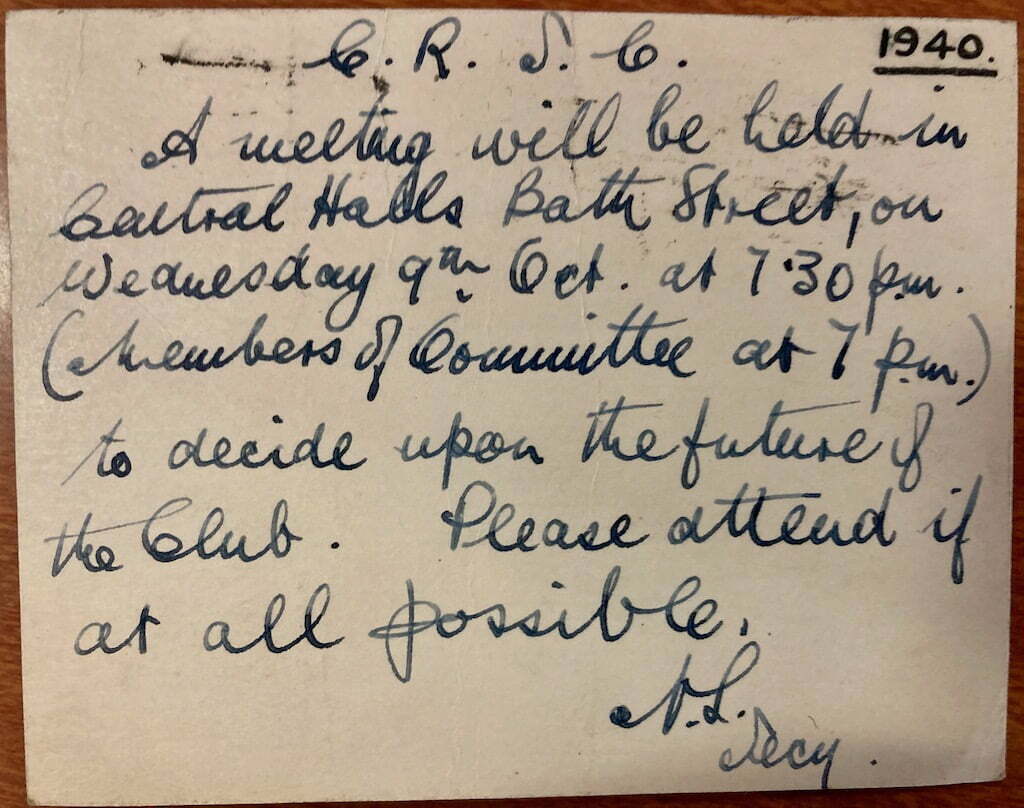
By October 1940, with the country in the throes of a world war, it looked as if the future of the Club might be under threat

Even though wartime put an end to excursions, members continued to meet. The Clyde River Steamer Club’s first decade ended with the election of a President and Vice-President — George Stromier and Leo Vogt — who would go on to play a pivotal role in its development after the war
SEE ALSO:
CRSC in the early 60s: springboard to rejuvenation
CRSC in the late 60s: an explosion of memorable activity
Stromier & Vogt, co-creators of a Club culture
With thanks to Fiona Stromier and Dr Irene O’Brien, chief archivist of the Mitchell Library, Glasgow.
Compiled by Andrew Clark and published on 9 October 2022












